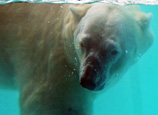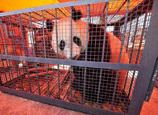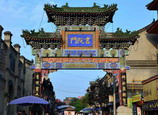
SYDNEY, May 30 (Xinhua) -- The dramatic geological events that created opal, Australia's national gemstone, shed light on similarities between Australia's Red Centre and Mars, a University of Sydney researcher announced Thursday.
According to Patrice Rey, a professor at the University of Sydney, the geology of Australia's Red Centre is so similar to the geology of Mars that it could yield valuable information on that planet for a fraction of the cost of a space mission.
"The United States and the European community have invested billions of dollars to send orbiters and rovers to Mars in the hope of finding extra-terrestrial life, but Central Australia offers a unique natural laboratory where potential Martian bio- geological processes could be studied," said Rey.
Rey conducted a study to investigate how and why opal forms in Australia.
"Australia produces over 90 percent of the world's supply of opal. Before this we did not know its origin, why it forms at such shallow depths or why it can be found in central Australia and almost nowhere else on Earth," he said.
The research found that extraordinary episodes of acidic weathering have occurred on both Earth -- during the drying out of the central Australian landscape -- and on Mars.
The harsh conditions on the red planet caused opaline silica, iron oxides and clay minerals, similar to those found in central Australia, to form on the surface.
"Many Australians familiar with the unmistakable features of Australia's Red Centre may not realise, despite their similarly striking red appearance, that it shares many of its remarkable characteristics with Mars, which also appears to be why opaline silica forms there," said Rey.
But where Mars was lumped with opaline silica as a product of acidic weathering, acid-neutralising rock in Australia allowed precious opal to form on Earth instead.
This was caused by a lucky switch to alkaline conditions before silica-rich gel trapped in fractures and cavities dehydrated and solidified.
The result was formations of rare opal, which is so scarce it is still mined by individuals rather than corporations, and is highly prized by jewellers.
The findings have recently been published in the Australian Journal of Earth Sciences.
















 A 62-year-old man was killed by two dogs
A 62-year-old man was killed by two dogs


![]()
